
-
 Channel D 新唱放前級: Seta Plus 與DAC Buffer: Seta Channel D 新唱放前級: Seta Plus 與DAC Buffer: Seta
Seta®
Balanced Direct Coupled Ultra Wide Bandwidth Phono Preamplifiers
Seta phonograph preamplifiers provide the users of Channel D Pure Vinyl software with an end-to-end route to the superb performance obtainable from "flat" vinyl reproduction (linear amplification followed by software RIAA correction). Seta preamplifiers offer a fully balanced (from input to output), low-noise, direct coupled (DC) differential circuit design, with an unprecedented (5 MHz) signal bandwidth - even at high gain settings.
- "Flat" Phono Preamplifier; perfect for use with Pure Vinyl software RIAA correction
- DC to 5 megahertz (- 3 dB) bandwidth (Model L), unprecedented for a phono preamplifier, delivers stunning improvements in smoothness, clarity, definition and 3-D imaging
- Optional, precision (± 0.1 dB) RIAA Correction provides simultaneous "Flat" plus RIAA Corrected, independently buffered and balanced (XLR) and single ended (RCA) outputs
About Seta
Listening evaluations using a variety of reference systems and program material show that an important key to accurate reproduction of vinyl audio involves greatly increasing the signal bandwidth of the preamplifier front end (the first stage of amplification touching the signal from the phono cartridge).
Why? High quality phonograph cartridges are capable of reproducing signals well over an octave above the audio range.
While such signals are inaudible, the preamplifier also must work to amplify these signals, which also are boosted over 20 dB above midrange levels (because of the standard vinyl treble pre-emphasis curve used in the mastering process). A preamplifier unable to handle out of band signals will distort in the ultrasonic region. This distortion will carry over into the audio range, affecting the reproduction of the midrange and treble.
Futhermore, the audibility of one of the most maligned deficiencies of vinyl, those irritating "pops and clicks," is a function of and can be exacerbated by the design of the preamplifier. The reason is that the transient signals caused by the stylus striking a scratch or foreign object in the groove have, in addition to large amplitude, a very fast risetime, and are unlike any musical signal. The fast risetime can cause slewing distortion in traditional narrow bandwidth or inexpensive phono preamplifiers, magnifying the audibility of pops and clicks. It's quite possible that this nonlinear coloration from a less capable preamplifier is at least partially responsible for causing many music lovers to shun recordings in the vinyl medium! The Seta wide bandwidth design employs a fast-responding front end gain stage with a slew rate of over 500 volts per microsecond (Model L), making it immune to transient distortions induced by pops and clicks, minimizing their impact on the listening experience. (The slew rate of the Seta output is deliberately limited to avoid causing slew rate distortion in any following components.) How much bandwidth is enough?
The rule of thumb for linear signal reproduction is ten times (an order of magnitude) greater than the signal of interest. With that criterion, the amplifier is able to linearly reproduce out of band signals, while preserving the integrity of the midrange and treble without the "haze" caused by, and characteristic of, ultrasonic intermodulation distortion. Going still further, extending the bandwidth by two orders of magnitude, delivers a stunning improvement in three-dimensionality and imaging. | Feature |
Benefit |
| Ultra-wide linear signal bandwidth (-3 dB at 5 MHz; Direct Coupled circuitry, No Capacitors in signal path) |
Improved Smoothness, Clarity, Definition and 3-Dimensional Imaging |
| Fully Balanced, Complementary Circuitry |
Reduced Noise and Distortion |
| Minimum Signal Path Design |
Preserves Signal Integrity |
| Low Impedance AGM Internal Rechargeable Battery |
50 Ampere, Deep Power Reserve Preserves Signal Dynamics |
| FET or Bipolar Hybrid Circuit Topology |
Performance Tailored to MM or MC Cartridges |
| Video Bandwidth, Balanced Low Impedance Output Amplifier |
High Noise Immunity; Not Affected by Connected Equipment or Length of Output Interconnect |
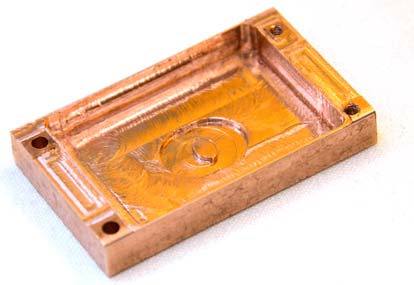 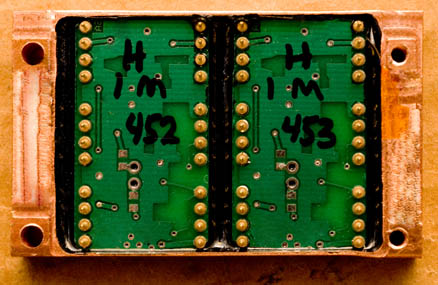
Seta preamplifier's hybrid, video - bandwidth amplifier modules are electronically and acoustically isolated and kept at a stable operating temperature and environment (constant humidity) by enclosing and sealing them in a block machined from a solid piece of oxygen-free high conductivity copper. Each module is carefully tested and characterized before and after being hermetically sealed in the copper block.
Noise Level
Seta preamplifiers, besides providing the widest bandwidth of any phono preamplifiers available (Seta Model L, -3 dB DC to 5 MHz), also feature low noise. Here is a comparison of measurements performed by Stereophile of the signal to noise ratio (SNR) of moving coil phono preamplifiers, including our Seta Model L. Higher numbers are better.
| Phono Preamplifier (MC Input) |
Unweighted SNR |
A - Weighted SNR |
Issue |
|
| Channel D Seta Model L |
59 dB |
67 dB |
August 2010 |
Stereophile Class A Recommended Component |
| Vitus Audio MP-P201 Masterpiece |
53.6 dB |
62.8 dB |
September 2010 |
Stereophile Class A+ Recommended Component |
| Boulder 1008 |
60 dB |
64.75 dB |
July 2010 |
Stereophile Class A Recommended Component |
| Nagra VPS |
not reported |
61 dB |
September 2008 |
Stereophile Class A Recommended Component |
| Boulder 2008 |
not reported |
49 dB |
July 2002 |
Stereophile Class A+ Recommended Component |
The Seta front end circuitry is tailored to preserve the strengths of the characteristics of different cartridge types. A low noise, high impedance FET front-end is used in the Seta Model H for moving-magnet and other high output cartridges, while an ultra-fast, ultra low noise bipolar transistor front end is used in the Seta Model L for low impedance, low output moving coil cartridges.
The circuit topology is fully differential, balanced direct-coupled circuitry from input to output. The front-end active circuitry is surrounded on five sides by a sub-enclosure machined from a solid block of copper. This provides electronic and acoustical noise isolation plus thermal stabilization. Bare copper metal surfaces are coated with a clear lacquer to prevent oxidation (and to maintain their beautiful color).
Unlike many other preamplifier designs: the rated (-3 dB) bandwidth is independent of gain. Rechargeable Battery Power Supply
The low-impedance, internally located AGM rechargeable battery is capable of supplying 50 amperes of current, outperforming other types of batteries used in audio applications. The battery is conditioned and kept float-charged by a proprietary, uniquely designed rail balancing circuit, rather than use an "off the shelf" microprocessor based conditioning and monitoring circuit, which would introduce unwanted noise. Locating the battery inside the preamplifier chassis also insures that the battery is in the same electrical environment as the sensitive front-end circuitry, eliminating potential sources of noise pickup. The external charging supply is automatically disconnected when an input signal is detected. Mechanical
All connectors are the best available, professional quality Neutrik gold contact XLR, premium Switchcraft TRS and WBT gold contact helical conductor wide bandwidth RCA. Pushbutton actuated, sealed gold contact small signal relays are used to change gain settings (four different gain settings). A unique rear-panel (optionally on front panel) rotary balance trim control with a precision 2 dB range provides for fine cartridge channel balancing (the trim setting is not affected by the overall gain). 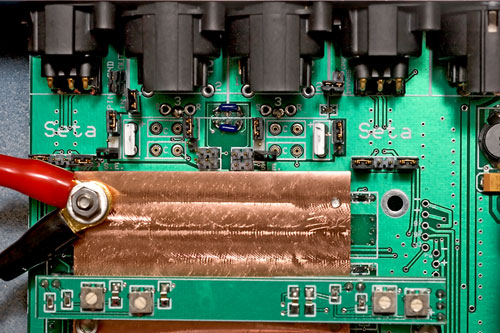 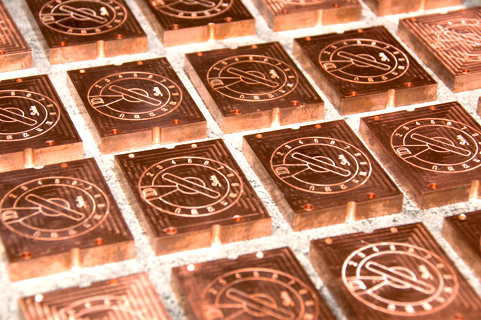
Interior Close-up View of Seta, showing Solid Copper Front-End Circuitry Isolation Block (Left);
New Seta Model L / Model H Preamplifier Modules (Right)
Seta Wide Bandwidth Direct Coupled Balanced Preamplifier Product Line
Seta Model L
For Low Output Moving Coil Cartridges
(Bipolar Hybrid, DC to 5 MHz bandwidth, < 0.001% THD 10 Hz - 40 kHz)
Buy |
Seta Model H
For High Output
(Moving Magnet, High Output Moving Coil) Cartridges (FET Hybrid, DC to 1 MHz bandwidth, < 0.007% THD 10 Hz - 40 kHz)
Buy |
Seta RCM
RIAA Correction Module
(simultaneous Flat and RIAA Outputs) for Model L or Model H, < 0.001% THD 20 Hz - 20 kHz)
Buy |
Seta Nano
For Low Output Moving Coil Cartridges
(Monolithic IC, DC to 3 MHz bandwidth, < 0.02% THD 20 Hz - 20 kHz)Buy |
- Delivers stunning improvements in sound staging, detail and 3-D imaging (compared to other preamps)
- Fully Balanced, Complementary Design from Input to Output; can be used with balanced or single ended turntables and other equipment
- Pure Linear, Straight-Wire Signal Gain, designed to be used in conjunction with Pure Vinyl software and A/D Interface (for RIAA curve correction)
- Software RIAA Correction Eliminates the need for Capacitors in the Signal Path (except for the adjustable cartridge termination on Model H/MM input)
- Circuitry Optimized For Cartridge Type (Bipolar for L/MC; FET for H/MM)
- Gain Settings (Seta Model L/H) are accessible from front panel
- Load Settings accessible from rear panel
- Solid copper shielding and temperature stabilization block (Seta Model L/H)
- Premium, precision components in signal path (0.1 % metal film resistors; silver mica and metallized polypropylene film cartridge loading capacitors)
- Rechargeable battery powered (low impedance AGM type, with output current capability of 50 amperes, Seta Model L/H)
- Designed and Assembled in U.S.A.
Seta Model L and Seta Model H
Model L - Fully Balanced, Wide Bandwidth 5 MHz "Flat" Phono Preamplifier for Low Output / Low Impedance Moving Coil Cartridges; Low Impedance, Low Current-Noise Hybrid Bipolar Input; High Performance, Low Noise Internal AGM Battery Power Supply.
Model H - Fully Balanced, Wide Bandwidth 1 MHz "Flat" Phono Preamplifier for High Output / High Impedance Cartridges; High Impedance, Low Voltage-Noise Hybrid FET Input; High Performance, Low Noise Internal AGM Battery Power Supply 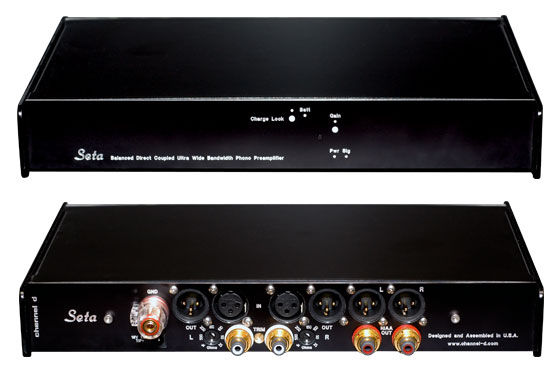
Seta Model H / L front; Model L rear view.
Specifications
| Gain |
(*add 12 dB for Hardware RIAA Option): 43, 46, 49, 52 dB (Model L); 23, 26, 29, 32 dB (Model H) |
| Frequency Response (-3 dB) |
DC to over 5 MHz (Model L); DC to over 1 MHz (Model H); any gain setting |
Seta Model H
Input Load Capacitance |
Min. capacitance 10 pF balanced, 20 pF single-ended; factory configured for 160/170 pF; includes plug-in components for an additional 47, 100, 150 or 220 pF; Seta L/MC capacitance 12 pF |
Seta Model H/MM
Max. Input Resistance |
89 k ohms; factory configured at 47 k ohms; custom plug-in resistors also can be installed |
Seta Model L
Max. Input Resistance |
2 k ohms; rear panel rotary switches for selecting 25/50/100/150/200/500/1k ohms; custom value plug-in resistors also can be installed internally |
| Distortion |
< 0.001% (Model L/MC), < 0.007% (Model H/MM). 10 Hz to 40 kHz, with 600 Ohm or greater load |
| Inputs |
Neutrik Gold Pin XLR Balanced; RCA (Balanced; functions as single-ended to balanced adaptor) |
| Outputs |
Neutrik Gold Pin XLR Balanced |
| Output Impedance |
less than 40 ohms |
| RIAA Compensation Curve |
(with Hardware RIAA Correction Module) Accuracy ± 0.1 dB; *RIAA module option also adds 12 dB additional gain (at 1 kHz) and RCA (Single Ended) Output Connectors |
Dimensions | Power Consumption |
less than 5 watts idle / float (Model L / H AGM Battery); less than 15 watts (AGM recharging) |
| Weight |
6.5 pounds |
| Size |
12" x 2" x 7" (W x H x D) |
Of course, the "last word" in the evaluation of audio products should be done by using the best "measurement:" real-world, listening-based evaluation. However, we believe that careful measurements also are essential, if only to insure that the product you receive actually conforms to the designer's original vision and intent.
*Note: If you're accustomed to using conventional phonograph preamplifiers, the available Seta gain settings may seem somewhat lower than usual. However, they are tailored to using the Seta with Channel D Pure Vinyl's digital vinyl compensation curve. The required gain is about 10 to 12 dB less than needed in a conventional phono preamplifier, because the signal is provided to Pure Vinyl with treble emphasis (boost) intact. (For the technically knowledgeable: this turns out to be somewhat less than the maximum 20 dB correction of the RIAA compensation curve at 20 kHz, due to the frequency balance of most music.) For example, if you would normally use a preamplifier gain of 40 dB for a moving-magnet cartridge, then the proper setting on the Seta would be 29 dB (or perhaps 35 dB). Likewise, the optional RIAA hardware compensation module provides an additional 12 dB of gain (at 1 kHz).
Seta RCM - RIAA Compensation Module (Optional Hardware)
Seta RIAA Internal Correction Option: Optional Internal Hardware RIAA Correction for Seta Model L or Model H. Includes Balanced (Neutrik Gold Pin XLR) and Single Ended (WBT Nexgen Helical Contact RCA) RIAA Phono Outputs. Can be used simultaneously with the Seta Flat outputs, for independent all-analog monitoring/listening plus Flat output to external digital converter. 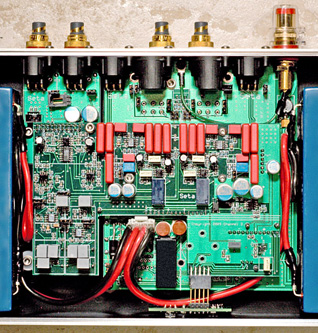
Internal RIAA Compensation Module, shown installed in Seta Model L.
Specifications | Output Impedance |
less than 40 ohms balanced, less than 20 ohms single ended |
| Frequency Response (-3 dB) |
DC to 12 MHz, balanced or single-ended outputs |
| Deviation from RIAA Standard |
less than ± 0.1 dB, 10 Hz - 50 kHz |
| Channel Match |
better than ± 0.02 dB, 10 Hz - 50 kHz |
| Phase Deviation from RIAA Standard |
less than 1 degree, 20 Hz - 20 kHz |
| Gain at 1 kHz |
12.0 dB |
| Harmonic Distortion (20 Hz - 20 kHz) |
less than 0.001% |
| Topology |
Fully complementary direct coupled wide-bandwidth balanced (differential) from input to output for high common mode noise rejection and low distortion. Second order DC servo (primary time constant 10.3 seconds). Passive high frequency correction; premium, low distortion wide bandwidth FET based gain stage for active low frequency correction. Independent single ended (RCA) ground referenced and balanced outputs |
| Connectors |
Premium Neutrik gold pin XLR and WBT helical conductor gold-plated RCA |
| Components |
Precision (0.1 percent) metal film resistors; low dissipation factor metallized polypropylene and polystyrene capacitors, hand selected to match design within 0.1 percent tolerance; ultra low ESR power supply decoupling capacitors |
Seta Nano
Fully Balanced, Wide Bandwidth 3 MHz "Flat" + RIAA Phono Preamplifier with Monolithic, Low Noise Front-End; for Low Output Moving Coil Cartridges; Low Noise DC Power Supply 
Seta Nano Phono Preamplifier front and rear view.
Specifications | Gain |
47 dB, Flat outputs 60 dB, RIAA Corrected outputs |
| Frequency Response |
(-3 dB, with MC Cartridge Source Impedance of less than 25 Ohms): DC to 3 MHz (Balanced Inputs); DC to 1 MHz (Single Ended Inputs) |
| Input Load Resistance |
25, 50, 100, 150, 200, 500, 1000, 2000 ohms, rear panel adjustable; internal sockets for custom values |
| Distortion |
< 0.02%, 20 Hz to 20 kHz |
| Topology |
Fully complementary direct coupled wide-bandwidth balanced (differential) from input to output for high common mode noise rejection and low distortion. Second order DC servo (primary time constant 10.3 seconds). Passive high frequency correction; active low frequency correction. Independent single ended (RCA) ground referenced outputs |
| Inputs |
Neutrik Gold Pin XLR Balanced; RCA (Balanced; functions as single-ended to balanced adaptor) |
| Outputs |
Flat signal, Neutrik Gold Pin XLR Balanced; RIAA Corrected (switchable to Flat) on single ended RCA connector outputs; both outputs usable simultaneously |
| Output Impedance |
less than 40 ohms |
| RIAA Compensation Curve Accuracy |
± 0.1 dB, 20 Hz - 20 kHz |
| RIAA Compensation Curve Channel Match |
± 0.02 dB, 20 Hz - 20 kHz |
| RIAA Compensation High Pass Filter |
10 Hz, 12 dB/octave, -0.3 dB at 20 Hz (can be disabled) |
Dimensions | Power Consumption |
less than 5 watts idle / float |
| Weight |
1.5 pounds |
| Size |
6" x 2" x 6" (W x H x D) |
Warranty | Warranty |
One year parts and labor, limited warranty |
Buy
Reviews
"CLASS A" RECOMMENDED COMPONENT (Editors' Top Picks - Phono Preamplifiers, Seta Model L) Stereophile - October 2010
"[The Seta Model L] is a quiet, remarkably neutral-sounding, extremely well-built phono preamplifier... [the Seta with Pure Vinyl's digital RIAA] was fundamentally accurate in terms of tonality and space, and its low- level resolution was remarkable."
Michael Fremer, Stereophile, August 2010 Full review
"A very linear circuit? [no intermodulation products in] the spectrum of the [Seta Model L's] flat output... no distortion harmonics can be seen above the noise floor, even when the load impedance is reduced to a punishing 600 ohms!"
John Atkinson, Stereophile, August 2010
-
-

RMAF 2012: Channel D Introduces New Ultra Wide Bandwidth Seta Plus Phono Preamplifier and Seta DAC Buffer Products
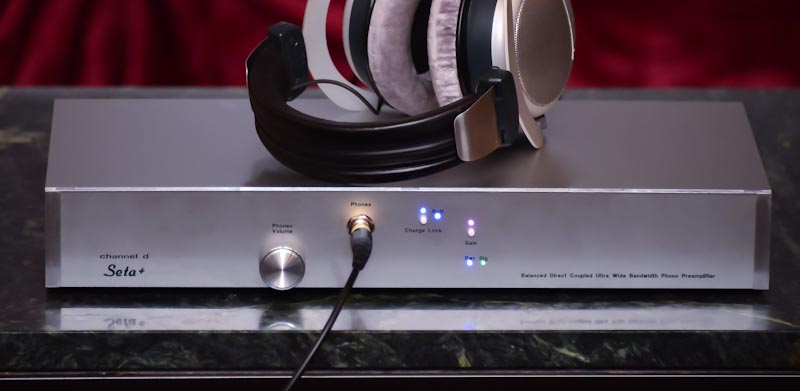
Channel D will introduce their new Seta Plus Phono Preamplifer and Seta DAC Buffer products at the 2012 Rocky Mountain Audio Fest, October 12-14, in Exhibit Room 482.
- The new Seta Plus Phono Preamplifier represents the continued evolution of Channel D's ground-breaking ultra wide bandwidth Seta "flat" phono preamplifier. The Seta Plus includes an updated, ultra low impedance, low noise rechargeable internal AGM battery power supply based on the original Seta phono preamplifier design, delivering superb transparency, detail and three-dimensionality for vinyl playback, a key benefit of the Seta's ultra wide bandwidth battery powered design. An optional, high quality headphone output is available.
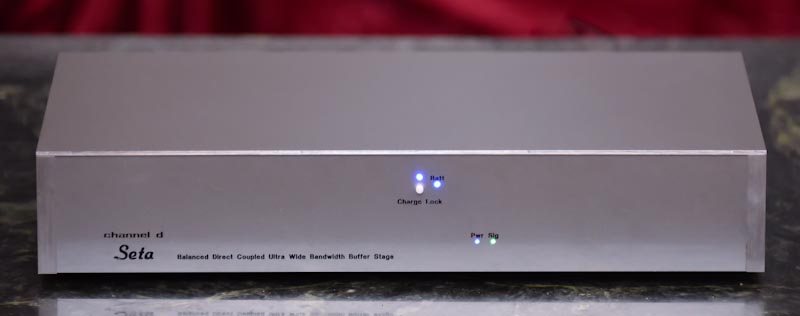
- The new Seta DAC Buffer solves a critical problem with today's Computer Audio that occurs when driving power amplifiers directly with the output of a DAC: setting the proper system gain structure. The Seta DAC Buffer provides a sonically transparent, analog way of adjusting the attenuation of any DAC's output (in 6 dB steps from -6 to -30 dB), permitting using the DAC or computer playback software's digital volume control in its optimum sweet spot (-10 to 0 dBFS).
Unlike passive signal attenuators which would be used for a similar purpose, the high (2 megohm) input impedance of the DAC Buffer insures that electronic loading of the DAC's output is kept to a minimum, while providing a sonically transparent, ultra wide bandwidth (DC - 12 MHz, -3 dB) and low (20 ohms) output impedance for driving any power amplifier load or long interconnect run without adding noise or distortion. The net effect is one of stunningly deeper, more well controlled bass with greater impact plus lower listening fatigue and improved ease of presentation over the entire audio frequency range.
-
 發文規則
發文規則
- 您不可以發表新主題
- 您不可以發表回覆
- 您不可以上傳附件
- 您不可以編輯自己的文章
-
討論區規則
|
















